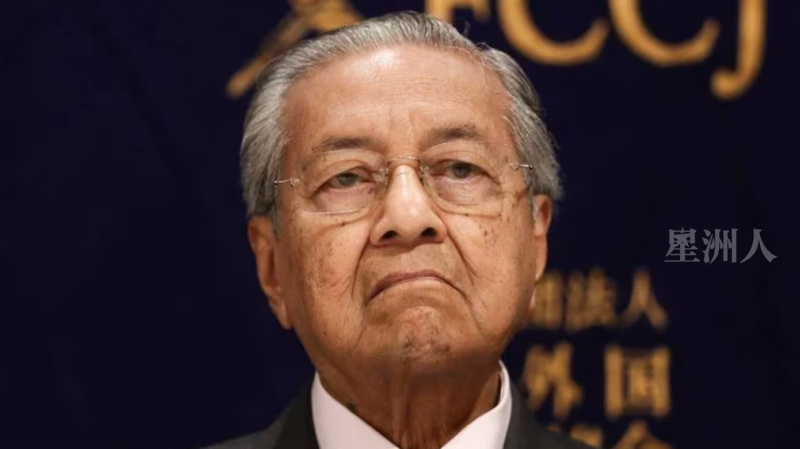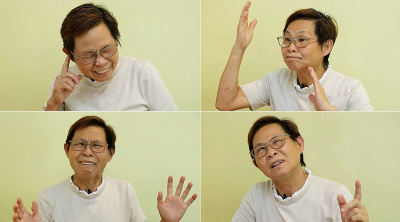
Tun Dr Mahathir mentioned that while visiting a mall in Kuala Lumpur, he suddenly wanted to ask: “Is this Malaysia, or have we become part of China?”
It turns out he was commenting on the large Chinese-language signages of outlets in a mall. The signages are translated in English but no Malay language. This observation triggered him to react in an emotional way.
The new mall he visited is likely one of the high-end shopping malls popular with tourists. It just reflects how cosmopolitan Kuala Lumpur is.
However, to claim that all shops in the mall only use Chinese signages with English translations is an exaggeration. A more accurate version would be that only a very small minority—such as Chinese restaurants or tea shops—primarily use Chinese characters, while the other 90%, or even 99%, of shops use Roman letters in Malay or English.
After all, businesses aim to attract customers, and the choice of signage is driven by what appeals to the largest customer base. Most signages use Roman letters that the general public can understand.
For example, luxury brands like Christian Dior will not display a Chinese signage with a translated name in Chinese and even local brands owned by Malaysian Chinese like Mr. DIY will not use a Chinese translated name. Even BYD, the electric vehicle manufacturer from China, opts to use BYD in Malaysia.
Of course, Dr Mahathir wouldn’t lie, but perhaps he is extremely sensitive about Chinese language. A Chinese signage or two of them may be magnified by his perception visually and mentally that create rejection which has affected his judgement.
He should first figure out how many stores use Chinese signages and the nature of business rather than jumping to the conclusion that “all signages are in Chinese with English translations. As the signages are without Malay language, making me feel like I am in China,”
People can’t help but wonder: Dear Dr Mahathir, is there a mall in Kuala Lumpur that fits your description of all signages are in Chinese?That’s simply impossible!
Such a sweeping remark can easily lead to misunderstandings and stir up unnecessary controversy. If a small number of shops use Chinese on their signages, it’s because they are targeting a specific customer group.
This reminds me of a time not long ago when I went to Bukit Bintang, the busiest district in Kuala Lumpur. Middle Eastern restaurants are found on one section of the street and the signboards had large Arabic characters.
I didn’t think that I was in Dubai, Riyadh or Beirut. I knew very well that this was the centre of Kuala Lumpur; and there were many Middle Eastern tourists in this area. These restaurants catered to their needs and preferences where their Arabic signboards were hung high to attract them, nothing to be alarmed about.
In recent years, Malaysia has attracted many Chinese tourists and investors, including those in the food and beverage industry. Their business is mainly tourists from China, Hong Kong Taiwan and Malaysian Chinese.
In addition, they do not know Malaysia well. So a small number of signboards may be unique with only Chinese language, or the proportion of the Chinese characters are too large.
In fact, as long as the authorities explain that signboards need to comply with local government regulations and must have Malay words, violations can be avoided; and for businesses that only deal with tourists from China, Hong Kong and Taiwan and local Chinese, the regulations can also be relaxed; the signboards of shops selling spicy hot pot may have larger Chinese characters. If the Chinese words are larger, they won’t bother anyone.
As for linking Chinese signboards with China, it is even more unreasonable! Chinese language is not exclusive to China, nor is Chinese language an extension of territory; Chinese language conveys Chinese culture, not politics and ideology.
Dr Mahathir saw a Chinese signboard in a shopping mall in Kuala Lumpur and thought he was in China. Could this be Sinophobia? Or is he still stuck in the colonial era, and he is always worried about losing autonomy?
By visiting abroad, be it New York, London, Toronto, Sydney or Tokyo, areas where Chinese people live are full of Chinese signboards, but no one would say that these areas are part of China.
Dr Mahathir, please take it easy. A few signages in Chinese language are not as serious as you think; they are merely the needs of some businesses. The key point is that one’s mind must keep up with the times. Don’t live in the past and don’t mislead others with prejudice.
ADVERTISEMENT
ADVERTISEMENT








































